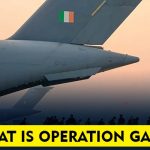WordPress database error: [Table './trishlldefenceac_def/wp_post_views' is marked as crashed and should be repaired]SELECT SUM(count) AS views
FROM wp_post_views
WHERE id IN (19175) AND type = 4
Aviation Career in Indian Navy : Indian Naval Aviation has long been a realm populated by legends, and the life of a Naval Aviator has been widely known. This attractive but gruelling career needs true grit and unwavering attention, as well as a healthy balance of caution and controlled aggression. Few people on the earth can claim to have lived the life of an aviator, and even fewer can claim to have lived the life of a Naval Aviator, which encompasses all three dimensions of land, sea, and air.
After completing the obligatory Sub Lieutenant’s Courses, a Naval Aviator volunteers for the aviation specialisation, either as a Pilot, an Observer, or a technical officer. Those who choose to train as a pilot must pass a rigorous medical fitness test before being sent to the Southern Naval Command’s School for Naval Airmen (SFNA) in Kochi for Pre-Flying Training. Pilot candidates who pass the exam are assigned to Air Force Academy Dundigal or Indira Gandhi Rashtra Udaan Academy for ab-initio flying training (IGRUA). After passing this stage, trainee pilots are divided into three streams: fighter, fixed-wing, and rotary-wing.
Those chosen for fighters and fixed-wing aircraft will continue their training with the IAF on the Advanced Jet Trainer and Dorniers, respectively, while those chosen for rotary-wing aircraft will be converted to Chetak helicopters at the Helicopter Training School (HTS). These pilots are assigned to Indian Naval Air Squadrons across the country after successfully completing their separate training levels. Two MiG 29K (INAS 300 and 303) fighter squadrons and one Hawk (INAS 551) unit are based in Goa and Visakhapatnam, respectively.
The Naval Institute for Aviation Technology (NIAT) in Kochi provides specialised training for aviation technical officers. They are streamed into various Navy aircraft fleets and assigned to relevant squadrons for ‘on-type’ qualification after satisfactorily completing the course. These officers are the backbone of naval aviation, ensuring that aircraft are fully serviceable and functioning at all times.
What is SSB Marking Scheme ?
They are in charge of the aircraft’s whole upkeep, including the power plant, advanced weapons/sensors, and key avionics, to mention a few. This extremely difficult but rewarding job entails managing cutting-edge equipment on a daily basis and adapting to the hardships of working from a variety of places, both ashore and afloat, all while keeping the aircraft fighting fit.
Only the finest of the best are filtered through the long and multi-layered training syllabi before being recruited into operational squadrons, thanks to the strict standards in place at every stage of a navy aviator’s conversion. These amazing guys running equally magnificent equipment are defined by a sound and quick intellect, sharp reflexes, courage under extreme pressure, swift adaptability, and the capacity to think ‘beyond the box.’ A career in Naval Aviation is challenging but exhilarating, awe-inspiring but daring, and immensely gratifying, offering a unique way of life that no other profession can equal.



